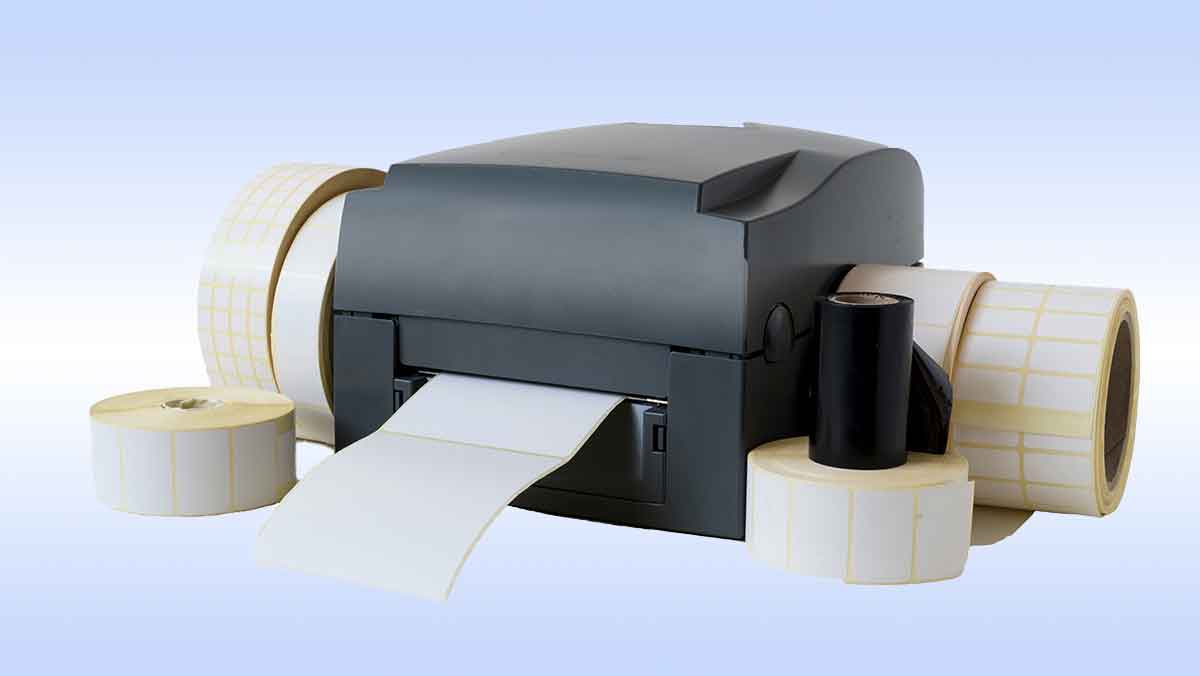It’s not an exaggeration to say that if you print labels in your operation, your choice of printing technology impacts your business. In fact, the option you choose can influence operational efficiency, cost-effectiveness, and overall productivity. When your print technology options include direct thermal and thermal transfer technologies, UAL can help guide your decision. We provide expert guidance and solutions for both technologies helping businesses find the optimal match for their specific needs. If you are unsure about the differences, how they work, where they are used, their benefits, and drawbacks, use this article to enhance your knowledge.
The Difference Between Direct Thermal and Thermal Transfer Technologies
First, what is the difference between direct thermal and thermal transfer technologies? Although both printers use a thermal printhead to heat the label stock and print the text or image, the technologies differ in significant ways.
Direct Thermal Printing
Direct thermal printers use chemically treated labels that darken when exposed to heat from a thermal print head. No ink, ribbon, or toner is required, simplifying the printing process.
Thermal Transfer Printing
In contrast, thermal transfer printing involves melting a wax or resin-based ink ribbon onto the label substrate using heat from the print head.
Durability and Usage Conditions
One of the primary differences between direct thermal and thermal transfer printing is the durability of the label. In fact, it’s a critical factor in selecting the right technology for your operation.
Because the material used to produce direct thermal labels is heat sensitive, exposure to sun and heat make them susceptible to fading. Plus, they don’t perform well in harsh applications or ones with excessive moisture. As a result, direct thermal labels are best suited for short applications.
Conversely, thermal transfer labels offer superior durability, remaining legible and intact even in challenging conditions such as extreme temperatures, chemical exposure, or outdoor elements.
Best Applications for Direct Thermal and Thermal Transfer Labels
The difference in durability between direct thermal and thermal transfer labels is a key factor in determining which technology best fits your application.
Direct Thermal Printing
Direct thermal printing is a best fit for:
- Temporary labeling applications such as shipping and logistics.
- Environments with controlled conditions, such as indoor retail settings or healthcare facilities.
In addition, they are commonly used for printing receipts, tickets, and event badges due to its cost-effectiveness and simplicity.
Thermal Transfer Printing
Thermal transfer printing is the preferred method for:
- Applications demanding durability and resistance, such as product labeling and asset tracking.
- Outdoor signage, inventory management, and industrial labeling where longevity is crucial.
Industries including manufacturing, automotive, and warehousing use thermal transfer printing for its reliability and durability. Further, thermal transfer printers are effective printing different types of label stock, including paper, plastic, and polyester. Plus, if you need colored text or images, you can use a colored ribbon to print the color.
Cost Considerations
Although they both use heating elements to heat the label stock and print the text or image, the architecture of direct thermal and thermal transfer printers differ. It’s these differences that impact the overall acquisition, supply and maintenance costs.
With no ribbon needed to print, direct thermal printers have fewer components that can fail. Usually, these printers have a lower purchase price and require less maintenance and fewer repairs than thermal transfer printers. Plus, the simpler design means that direct thermal printers are more compact. In fact, most mobile printers use direct thermal technology. As for the consumables, while direct thermal labels are typically a little more expensive, there is no cost for ribbons.
But, while direct thermal printing is a lower cost option, it’s a more expensive option if your labels fail because of fading or durability issues. Ultimately, it’s the end use application that should outweigh the cost considerations.
Quality and Resolution
Both technologies are great options for printing barcodes, text and images. Similar to the cost comparison, it’s not the level of quality that should guide your printer selection, it’s the end use application.
Environmental Impact
In terms of environmental impact, direct thermal printing is considered the more eco-friendly option because it eliminates the need for ink ribbons which reduces waste. Although there are eco-friendly ribbons and recycled label materials available, those are still components required for thermal transfer printing.
Your End Use Application Drives The Best Printer Option
The choice between direct thermal and thermal transfer labeling technologies depends on various factors, but the end use application should drive the final decision. Typically, if the label requires a long life, thermal transfer is the right option while direct thermal is best for a one time or short term need. Here are additional applications to consider.
|
Direct Thermal - End Use Application |
Thermal Transfer - End Use Application |
|
Indoor only |
Exposed to direct sunlight |
|
Deli products |
Exposed to heat |
|
Receipts |
Hazardous materials or chemicals |
|
Name tags |
Building materials |
|
Patient wristbands |
|
|
Pharmacy and Medications |
UAL stocks hundreds of Direct Thermal and Thermal Transfer labels for your end use applications.
United Ad Label
When you're considering print technology options like direct thermal and thermal transfer, UAL is here to assist you. Our expertise in both technologies ensures that you find the tailored solution to meet your specific needs. Contact us to learn more.
